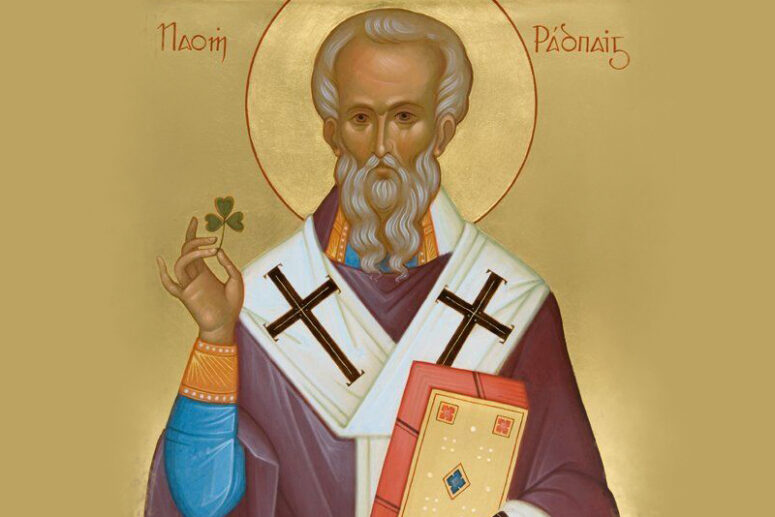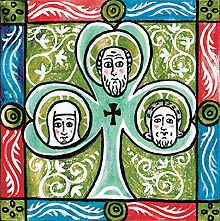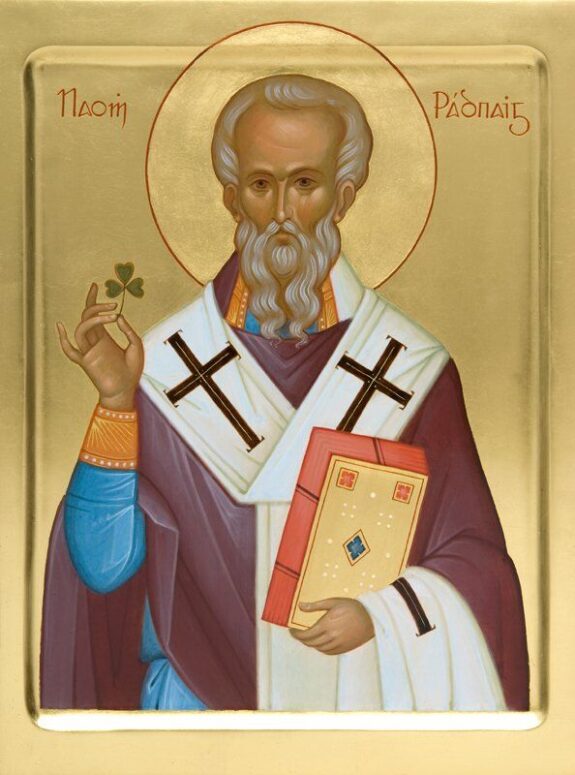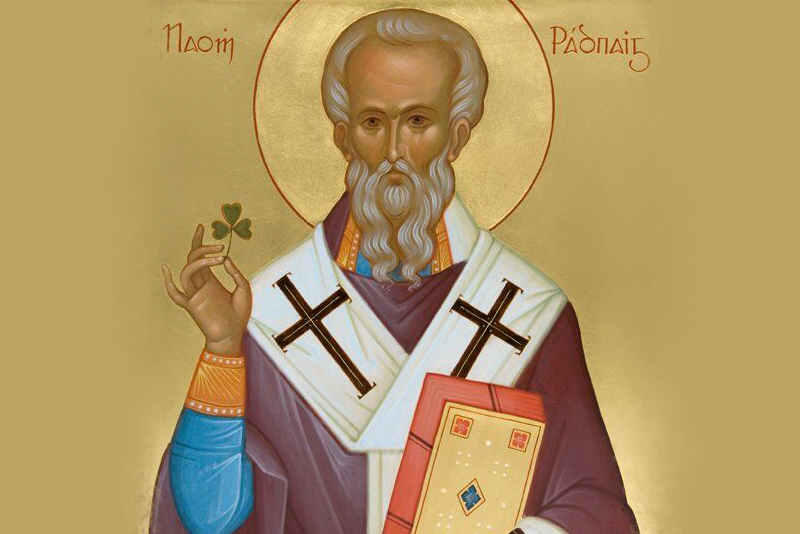
Of the many colourful and boisterous feasts celebrated throughout the year, there is one that many Americans and Europeans will know without looking in their calendars. On this day, many people wear green, images of the shamrock are in every place, and bagpipes play all around. So who was Saint Patrick, and why is his feast day on 17 (30) March celebrated so widely across the world, by Christians and non-Christians alike?
On Saint Patrick’s day, we see a lot of green. From Dublin to Sydney, and from New York to Moscow, the streets become green, people wear green and drive green cars, they paint their houses and even their faces in green. The music and dance, the services at churches in the West, and more recently in Russia, the orchestra parades, roadshows, costumes and fireworks are all dedicated to one person who lived about fifteen centuries ago.
The identity, life and works of Saint Patrick are confirmed by extensive and reliable historical and documentary evidence. Yet one would be hard-pressed to find another example of a historical figure surrounded by so much myth, legend and fiction. Despite the popularity of the saint, most people would associate his name only with beer and with Ireland. But was he really the patron saint of beer and the leprechauns? Let us explore the three most common misconceptions about Saint Patrick.
1. Saint Patrick and the beer industry

When people are preparing to celebrate Saint Patrick’s Day, what is the first thought that comes to their mind? You guessed it! The pub! And no good Irish paddy is in any doubt about what they are going to drink. Beer!
The associations with Saint Patrick’s day are predictable but are very distant from both the saint and his feast day. Perhaps the only thing that the majority who have heard about Saint Patrick will know is that it is somehow related to beer drinking. In truth, this stereotype is quite new. At its source is the commercialisation of the saint’s feast day that benefited the beer producers. Would not it be a good idea, after all, to offer all the celebrants a glass of fine beer on a great day such as this? In the new urban folklore, grounded in consumerism and materialism, Saint Patrick is claimed to be the inventor of whisky, a member of a renowned dynasty of beer makers and the patron saint of the beer industry – even some of the more authoritative tourist guides assert this. Not surprisingly, so many people have come to see him as a fun-loving merry fellow with a beer cup and shamrock in his hand; many even believe it to be their sacred duty to have a drink or two on this fine day.
This is our first myth about Saint Patrick. He never made beer. Moreover, in the old days, all the Dublin pubs would close for Saint Patrick’s day, and all the churches would stay open.

So who was the real Saint Patrick? The principal source of information about his life and works is his book titled “Confession” (Confessio), which he wrote in circa 460. Like few other writers of his time, he left behind a sincere and moving account of his spiritual experiences. But he did not write a word about beer for one simple reason: Saint Patrick was a Christian missionary who dedicated himself to the preaching of Christ’s resurrection.
In his book, he reveals to us his innermost thoughts and shares with us his misadventures. He talks about repentance, his search for God and the moment when God finally found him. His writings depict him as a man of great candour and simplicity. David Binchy, one of the most demanding critics of the biographies and scholarly works on Saint Patrick, remarked, “The moral and spiritual greatness of saint Patrick shines through every phrase of his Latin Vulgate.
Multiple scholars have studied Saint Patrick’s Confessio, and none have found reason to question his authorship. Yet this is not his whole legacy. His other prominent work surviving to our time is the Coroticus epistle. It is filled with his righteous wrath over the actions of the Brittonic warrior who led a Warband of Scotts and Picts to the Southern coast of Ireland, killing and enslaving many new Christian converts. Saint Patrick wrote the letter because Coroticus called himself a Christian, imploring him to come to his senses and repent before it was too late.
As we see, saint Patrick’s ministry in Ireland was no cakewalk. Preaching the Gospel involved a lot of hard work, and required enormous spiritual and physical effort. He believed from all his heart that God was giving him the strength and endurance to withstand these hardships.
So the depiction of Saint Patrick as a merry beer maker has no basis in reality, but rather is the product of creative advertising. The true story of his life and his account of it in the Confessio depict him as a man of great dedication and spiritual depth who brought to the Irish the living word about the resurrected Lord and did so with enormous sensitivity and tact.
In his ministry, he utilised many of the tools that facilitated the rapid spread of Christianity across Ireland. He responded to open challenges from Paganism with logical arguments and the power of his faith and defeated them fully. However, when Pagans were sincere in their misconception, Saint Patrick treated them with exceptional patience, as his fight was not with the people. According to tradition, to preach to the Irish the mystery of God’s unity in the Holy Trinity, Saint Patrick picked up a shamrock, raised it high above his head and showed to the people a way to understand the idea of the Triune God. From that day, the three-leaved shamrock became a symbol of the Holy Trinity, and green the colour of the nation, and so the green colour of Saint Patrick’s day represents the Holy Trinity and not John Barleycorn. Patrick was not a beer maker. As if anticipating how his image and perception might change in time, he wrote these lines in his book Confessio: “I want my brothers and relations to know what I’m really like so that they can see what it is that inspires my life.”
Do not miss 2 other most interesting myths about Saint Patrick in our tomorrow’s newsletter! Join our family:
Translated by The Catalogue of Good Deeds
Source: https://foma.ru/ognennyij-apostol.html





